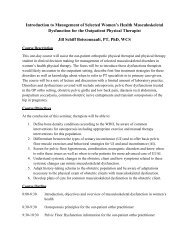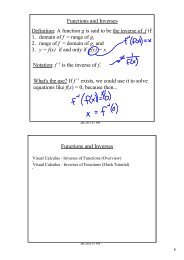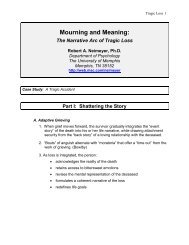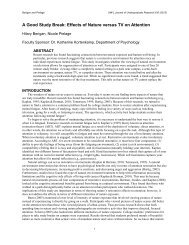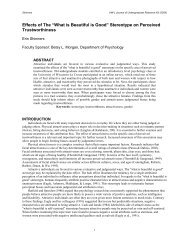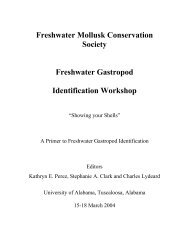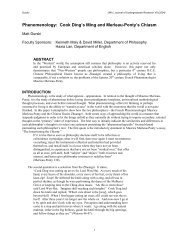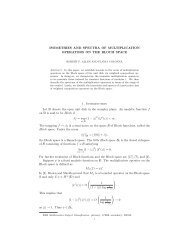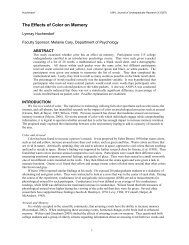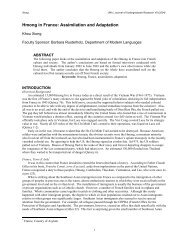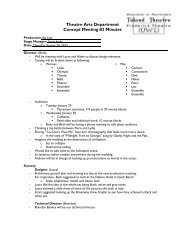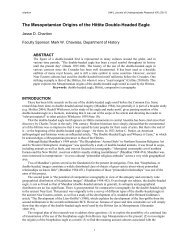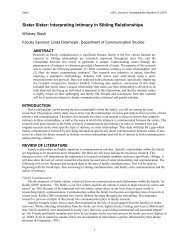A Guide for Terrestrial Gastropod Identification - University of ...
A Guide for Terrestrial Gastropod Identification - University of ...
A Guide for Terrestrial Gastropod Identification - University of ...
You also want an ePaper? Increase the reach of your titles
YUMPU automatically turns print PDFs into web optimized ePapers that Google loves.
Basic Ranks:<br />
GX- Presumed Extinct: Not located despite intensive searches; virtually no likelihood <strong>of</strong><br />
rediscovery<br />
GH- Possibly Extinct: Missing; known only from historical occurrences but still some hope <strong>of</strong><br />
rediscovery<br />
G1- Critically Imperiled: At very high risk <strong>of</strong> extinction due to extreme rarity (<strong>of</strong>ten five or<br />
fewer populations), steep declines, or other factors.<br />
G2- Imperiled: At high risk <strong>of</strong> extinction due to very restricted range, few populations (<strong>of</strong>ten 20<br />
or fewer), steep decline, or other factors.<br />
G3- Vulnerable: At moderate risk <strong>of</strong> extinction due to a restricted range, relatively few<br />
populations (<strong>of</strong>ten 80 or fewer), recent and widespread declines, or other factors.<br />
G4- Apparently Secure: Uncommon but not rare; some cause <strong>for</strong> long-term concern (e.e.<br />
widespread declines).<br />
G5- Secure: Common; widespread and abundant.<br />
Variant Ranks:<br />
G#G#- Range Rank: A numeric range rank (e.g., G2G3) is used to indicate the range <strong>of</strong><br />
uncertainty in the status <strong>of</strong> a species or community. A G2G3 rank would indicate that<br />
there is a roughly equal chance <strong>of</strong> G2 or G3 and other ranks are much less likely. Ranges<br />
cannot skip more than one rank (e.g., GU should be used rather than G1G4).<br />
GU- Unrankable: Currently unrankable due to lack <strong>of</strong> in<strong>for</strong>mation or due to substantially<br />
conflicting in<strong>for</strong>mation about status or trends. Whenever possible, the most likely rank is<br />
assigned and a question mark qualifier may be added (e.g., G2?) to express minor<br />
uncertainty, or a range rank (e.g., G2G3) may be used to delineate the limits (range) <strong>of</strong><br />
uncertainty.<br />
GNR- Unranked: Global rank not yet assessed.<br />
Rank Qualifiers:<br />
Q- Questionable Taxonomy: Taxonomy distinctiveness <strong>of</strong> this entity at the current level is<br />
questionable; resolution <strong>of</strong> this uncertainty may result in change from a species to a<br />
subspecies or hybrid, or the inclusion <strong>of</strong> this taxon in another taxon, with the resulting<br />
taxon having a lower-priority conservation status.<br />
U.S. Endangered Species Act Conservation Status<br />
The U.S. Endangered Species Act (U.S. ESA) is the primary legislation that af<strong>for</strong>ds federal legal<br />
protections to threatened and endangered species in the United States, and is administered by the<br />
U.S. Fish and Wildlife Service (USFWS) (http://endangered.fws.gov/) and U.S. National Marine<br />
Fisheries Service (NMFS) (http://www.nmfs.noaa.gov/prot_res/overview/es.html). As defined by<br />
the Act, endangered refers to species that are "in danger <strong>of</strong> extinction within the <strong>for</strong>eseeable<br />
future throughout all or a significant portion <strong>of</strong> its range," while threatened refers to "those<br />
animals and plants likely to become endangered within the <strong>for</strong>eseeable future throughout all or a<br />
significant portion <strong>of</strong> their ranges."<br />
LE- Listed Endangered:<br />
LT- Listed Threatened:<br />
C- Candidate:<br />
10



